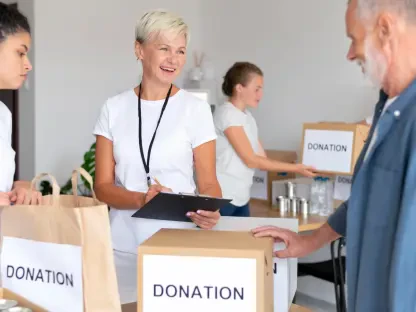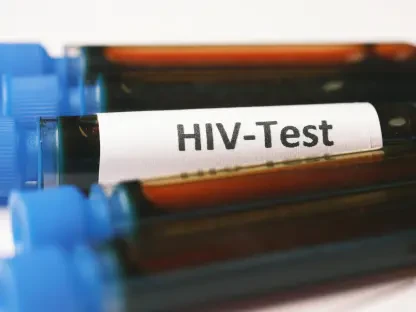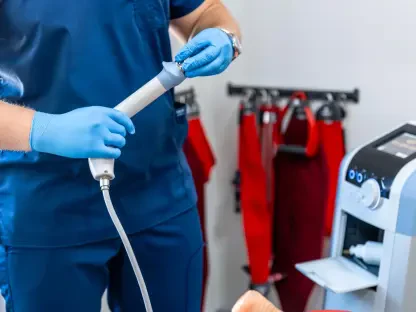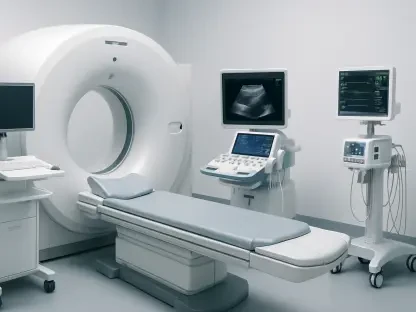In the heart of rural Ohio, a transformative initiative is quietly rewriting the future of rural healthcare access, with community action serving as its driving force. The challenges of prohibitive costs and limited accessibility to medical equipment are daunting for many rural residents, particularly those uninsured. In response, a non-profit collaboration in Ohio has forged a new path by collecting, refurbishing, and donating essential medical equipment to underserved individuals free of charge. This program, spearheaded by Rural Action in partnership with local organizations, harnesses the power of community networks to bridge significant gaps in healthcare resources. By utilizing a model akin to successful urban counterparts, it addresses not only equipment shortages but also broader healthcare disparities that have long persisted in rural Appalachian regions. Through innovative practices, the initiative not only alleviates immediate healthcare burdens but also fosters resilience and sustainability within these communities.
The Power of Community-Based Resource Sharing
Central to the initiative’s success is its reliance on community-based resource sharing and leveraging local networks to source used medical equipment. The program operates much like a dynamic scavenger hunt, collecting surplus medical items from places such as nursing homes, hospitals, and even libraries. This approach transforms potential waste into vital resources for those in severe need, breaking down socioeconomic barriers that have historically restricted healthcare access. The initiative’s director, Ed Newman, likens it to an exchange, where the generosity of those with excess equipment meets the needs of those who go without. This voluntary redistribution extends beyond financial terms, aiming to dismantle the systemic inequities that undermine healthcare delivery in rural settings.
The program’s design draws considerable inspiration from successful models like Cleveland’s MedWish International, a renowned entity in medical equipment donations both locally and globally. By localizing its efforts, the initiative tailors its approach to meet the specific needs of Appalachian Ohio, where logistical hurdles such as transportation and digital connectivity severely limit access to necessary services. Since its inception in 2021, Rural Action’s program has reached approximately 2,300 individuals, underscoring its critical role in enabling healthcare access within these often-overlooked communities. This correlation between global models and localized adaptation not only highlights the initiative’s success but also sets a precedent for similar efforts globally.
A Socioeconomic Approach to Healthcare Accessibility
An integral aspect of the initiative is its philosophical approach akin to the “Robin Hood” principle, where the wealthy or those with surplus donate equipment, which is then channeled to those lacking access. This model effectively redistributes resources, alleviating pressures on both ends and creating a sustainable support system inherently tied to community engagement. The program supplies everything from basic necessities like bandages to high-cost items such as motorized wheelchairs, which can range between $2,000 to $20,000. Partnerships with entities such as the Lil Repair Shop further ensure that equipment is functional and tailored to recipient needs, often at minimal or no cost.
One of the program’s significant triumphs involves the provision of a motorized wheelchair to a hospice patient whose insurance refused coverage, a testament to the tangible impact on quality of life. Dennis Jones, owner of the Lil Repair Shop, shared this poignant narrative, highlighting how the donated wheelchair allowed the patient to maintain mobility and independence, demonstrating the program’s ability to offer profound personal benefits. The initiative solidifies notions of enhanced individuals’ autonomy in managing health conditions, offering a compelling example of communal responsibility’s power in healthcare transformation.
Enabling Sustainable Community Healthcare Solutions
The initiative further reveals its strength through personal anecdotes that underscore its importance in individual lives. Following knee surgery, resident Rachel Everett benefited from several items provided by the program, significantly easing her financial strain and supporting her recovery. Once healed, she returned the equipment to further the resource-sharing cycle and sustain the program’s resource pool. This reciprocal mindset emphasizes a broader communal well-being beyond immediate personal gain, breeding a sense of shared responsibility and unity within the community.
From a broader perspective, the overarching trends suggest that community-driven solutions continually arise to address deep-seated healthcare inadequacies. While the program does not finance surgeries or act as direct medical intervention, it adequately fills the gap by equipping individuals with necessary tools for independent healthcare management. This model of sustainable healthcare support depicts an active community taking charge of its health management, counterbalancing accessibility restrictions shaped by financial difficulties and geographical isolation. Through shared resources, the community embodies an active participant in reforming traditional healthcare delivery systems, turning vulnerability into resilience.
Pioneering Community Engagement in Healthcare
Deep in rural Ohio, an innovative initiative is quietly redefining the future of healthcare accessibility in these regions, powered by community action. Facing the formidable obstacles of high costs and limited access to medical equipment, many rural residents, especially those without insurance, find themselves in a challenging position. To tackle these issues, a non-profit effort in Ohio has blazed a new trail by gathering, refurbishing, and distributing necessary medical equipment to underserved individuals at no cost. This project, led by Rural Action alongside local organizations, leverages community networks to close major gaps in healthcare resources. By adopting a model similar to those successful in urban areas, it addresses shortages of equipment and broader healthcare disparities that have long plagued rural Appalachian areas. Through its innovative methods, this initiative not only eases immediate healthcare challenges but also promotes resilience and sustainable practices within these communities, ensuring a healthier future for the region.









